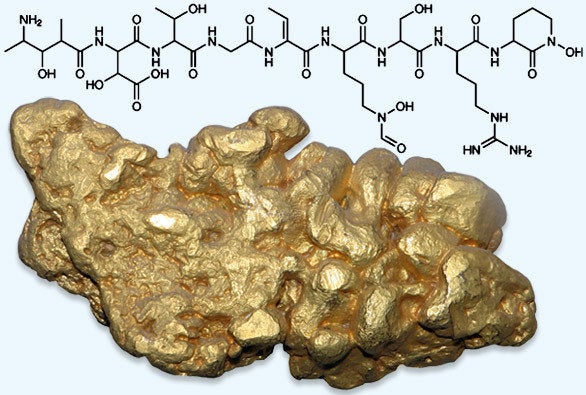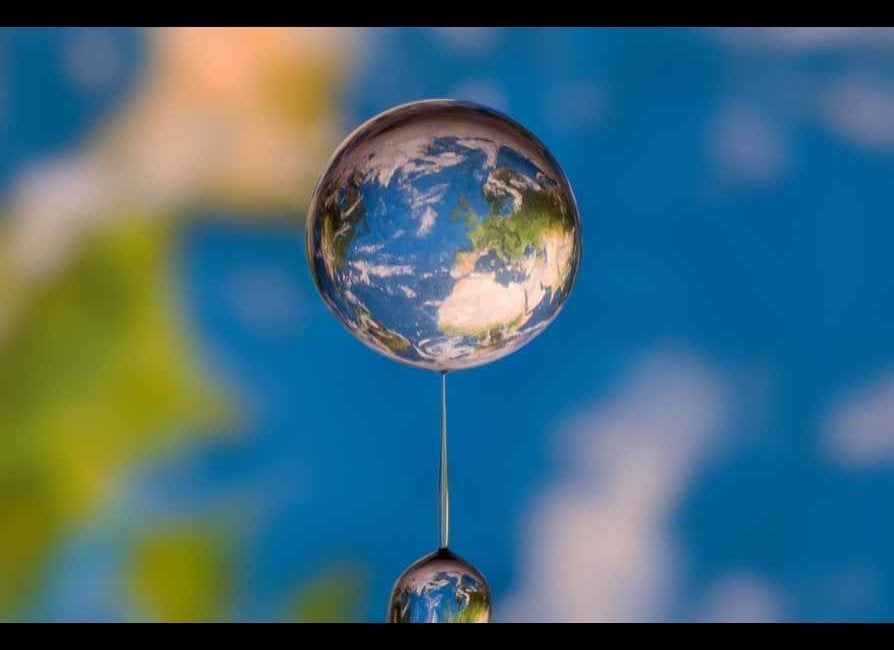
By Robert F. Service
If Fritz Haber were alive today, he'd undoubtedly be scrambling to get his hands on some delftibactin, the molecule pictured above. Haber won the 1918 Nobel Prize in chemistry for inventing the process for converting the ultrastable form of nitrogen in the air to the more reactive chemical form required to make fertilizer.
He then spent a good chunk of the rest of his scientific career trying to do the opposite chemical trick: pulling reactive gold ions out of seawater and converting them to the more stable form found in gold nuggets, bars, and bullion. He failed miserably, in large part because gold ions make up only a few parts per trillion of seawater.
But Delftia acidovorans has succeeded where the Nobel laureate failed. The gold-loving microbe manufactures and secretes delftibactin, which forces gold ions to precipitate out of solution.
As the bacteria carry out this job, they not only remove highly toxic gold ions from their surroundings, but they also create the neutrally charged gold nuggets on which it then makes a home. Reporting online today in Nature Chemical Biology, researchers say that they've now isolated delftibactin for the first time.
If scientists isolate enough of the molecule, could they finally realize Haber's dream of harvesting gold from the oceans? Perhaps. But then again, delftibactin also carries out the same trick with iron ions. So if you tried it on a large scale you might get lumps of iron instead.
See more ScienceShots.
ScienceNOW, the daily online news service of the journal Science
